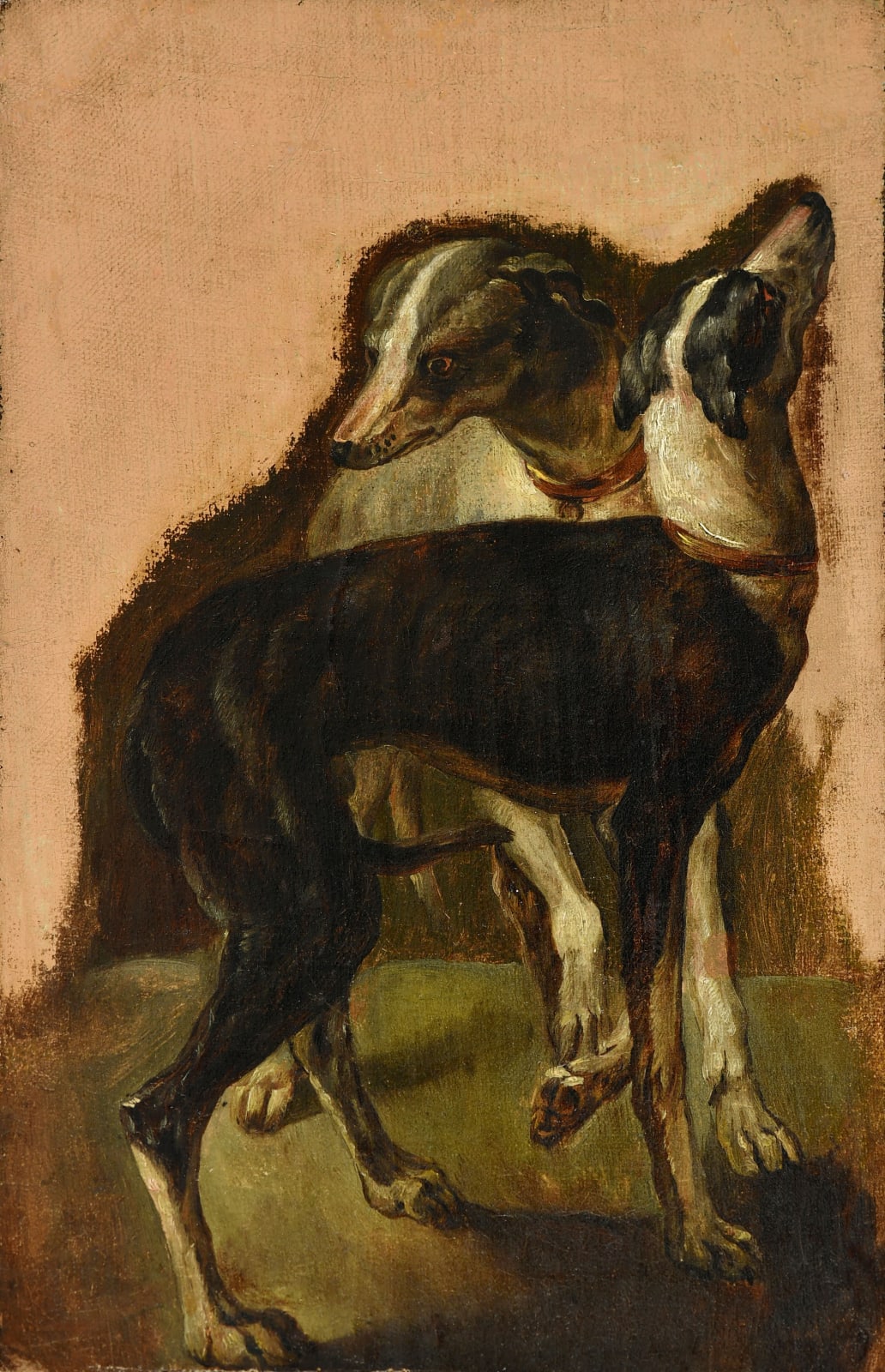
Jan Fijt & Erasmus II Quellinus, Diana with her Hunting Dogs and their Catch of Game.
Staatliche Museen zu Berlin, inventory number 967.
Jan Fijt (Antwerp 1611 - 1661)
Jan Fijt was born in Antwerp in 1611. At the age of ten he was apprenticed to the Dutch painter and draughtsman Hans van den Berghe, who himself had trained with Hendrick Goltzius and Peter Paul Rubens. It is likely that Fijt later on completed his training under Frans Snyders, probably between 1629 and 1631. In 1630, Fijt became a master of the Antwerp guild of St Luke. In 1633, he set off for Italy, spending some time in Paris on his way there. In 1634 he is documented in Rome; afterwards Fijt visited Venice, Naples and Florence. By late 1635 he was in Rome again, where he settled for a few years. He became a member of the so-called ‘Bentveughels’, the society for artists from Flanders and the Northern Netherlands in Rome. His club nickname was ‘Goudvink’ (‘Bullfinch’). By september 1641, the artist was back in Antwerp, where he would work and reside for the rest of his life. In 1650, he joined the Guild of Romanists, a local society of notables and artists who had all spent some time in Rome. Fijt married Françoise van de Sande in 1654; the couple had four children.
Like Frans Snijders, Jan Fijt was a true animalier, albeit a much more versatile and prolific painter. He was very skilled in depicting wild animals and birds, producing many hunting scenes, still life paintings of game and studies of various animals. Fijt also painted beautiful still life compositions with flowers and fruit. He often collaborated with others, entrusting the figures in his paintings to Cornelis Schut or Thomas Willeboirts Bosschaert, while Erasmus II Quellinus was sometimes asked to execute the architectural backgrounds. Fijt ran a successful studio and became a wealthy man. He trained several pupils, including Pieter Boel, whose style would remain very close to Fijt’s throughout his career.
Stylistically, the influence of Snyders on Fijt’s work is evident, although Fijt painted more freely and loosely, with dynamic, almost nervous brushstrokes and a lively palette (a result of his long stay in Italy). The artist was particularly skilled at depicting the textures of the fur and plumage of the animals. It is evident that the artist made many studies from life, as the animals’ movements and postures are captured very precisely and realistically.
The present carefully executed and quite accurate oil sketch is a preparatory study for a much larger work Fijt made in collaboration with Erasmus II Quellinus (ca. 1650) which is currently kept in Berlin (Staatliche Museen zu Berlin, inv. no. 967, see illustration). In that painting, Fijt was responsible for the dogs and the hunting still life, whereas Quellinus painted the figure of Diana. This current modello is a real 'work in progress' to get an overall and better understanding of the final work. This can be concluded when looking at the spontaneous touch, the unfinished background - the work is essentially a 'non finitum' - and the little holes indicating where the grid of wires was hung.
Provenance
Private collection, Germany.
- X
- Tumblr




